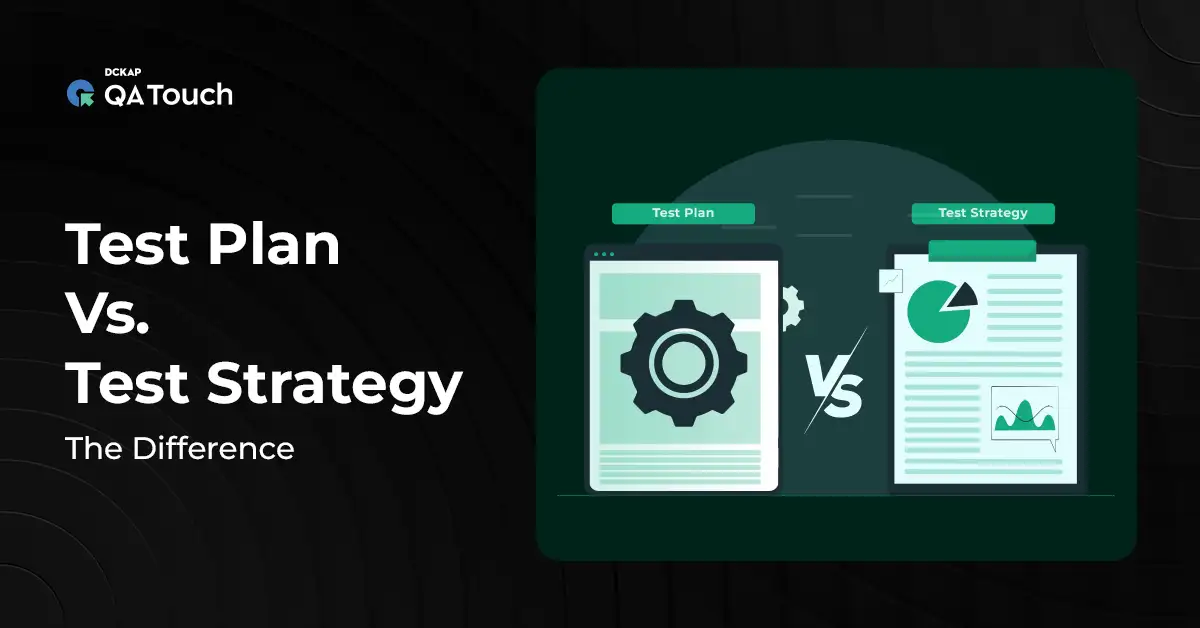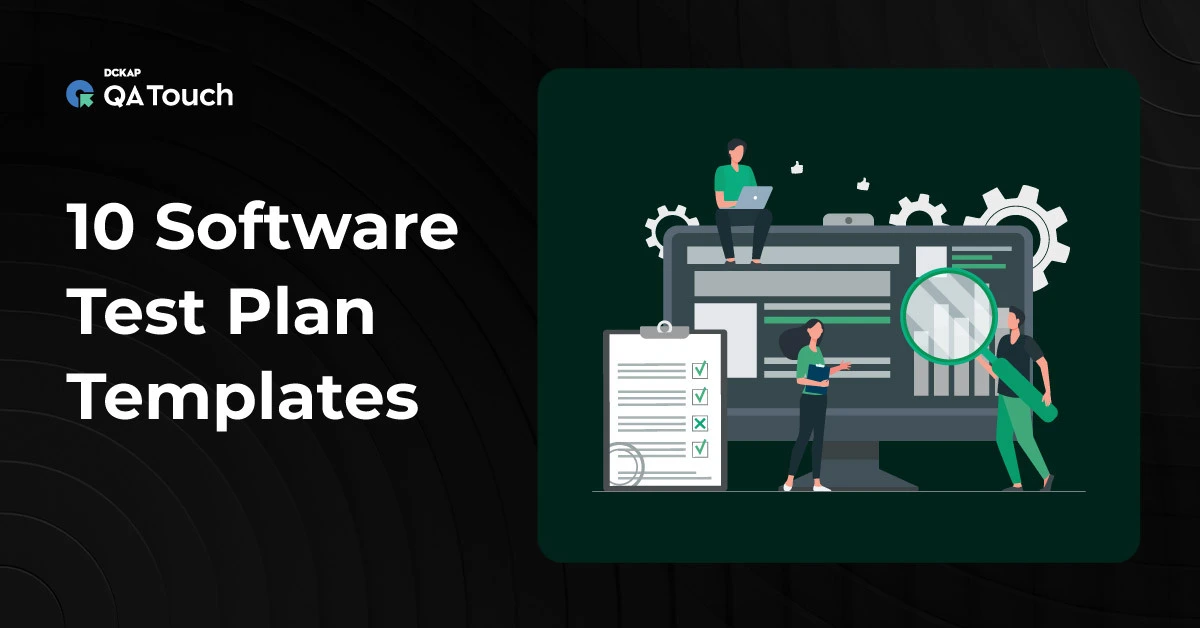Ensuring your products’ quality and regulatory compliance is essential in today’s tech-driven world. One of the most effective tools you can use to achieve these goals is a Validation Master Plan (VMP). This comprehensive document outlines how to validate and verify that a software product meets its intended use, quality standards, and regulatory requirements. Whether you’re dealing with complex enterprise applications or niche software solutions, having a VMP is crucial for risk management and quality assurance.
In this guide, we’ll explore what a VMP is and why it’s essential for your software projects. We’ll also walk you through creating one step-by-step.
Understanding Validation Master Plans

A Validation Master Plan (VMP) is your roadmap to ensuring that your software product meets all necessary quality and regulatory standards. It’s a comprehensive document that outlines the approach, resources, and activities you’ll need to validate your product effectively. By serving as a guiding framework, the VMP ensures that all validation aspects—from test strategies to documentation—are planned and executed seamlessly.
Here’s a breakdown of the key components of your VMP:
- Scope: Defines the boundaries of your validation efforts, specifying what will and won’t be tested so that you can focus your resources efficiently.
- Strategies: Establishes the approach to be used in the validation process. This includes identifying critical components, setting risk-based priorities, and determining the level of validation required based on the system’s complexity and risk to ensure quality, performance, and compliance.
- Methodologies: Outlines the testing techniques and tools you’ll use, such as automated testing, manual reviews, and integration testing, to ensure thorough coverage.
If you work in industries where quality is critical—like healthcare, finance, or any highly regulated sector—validation takes on even more significance. Regulatory standards, such as ISO 9001 (focused on quality management systems) and CMMI (Capability Maturity Model Integration), reinforce the importance of validation. These standards help guide the creation and execution of your VMP, ensuring your projects consistently meet industry expectations for quality and compliance.
Importance of a Validation Master Plan
A Validation Master Plan (VMP) plays a crucial role in ensuring that your software functions as expected and complies with industry regulations and quality standards. Let’s explore why having a VMP in place is vital for your project’s success:
1. Risk Management
A well-structured VMP is a powerful risk management tool. It helps you identify, assess, and mitigate risks throughout the entire software development lifecycle. A VMP can highlight potential risks related to functionality, performance, security, and compliance, providing a clear plan to address them before they become major issues.
By identifying these risks early, you can develop strategies to prevent them from negatively affecting your final product. Common risks might include performance bottlenecks, security vulnerabilities, integration failures, or user experience problems. A VMP ensures you’re ready to address these risks head-on, helping you deliver a robust product.
2. Quality Assurance
Your VMP is key to aligning all validation activities with your overall quality assurance (QA) strategy. It lays out specific validation strategies and testing procedures, ensuring that every critical aspect of your software is tested and verified before release.
Quality assurance goes beyond just functional testing. It also includes performance, security, and user experience testing. With a solid VMP, you can be confident that your software meets all quality standards at every stage of the development process.
3. Compliance with Regulatory Standards
If you work in a regulated industry like healthcare, finance, or aerospace, compliance is essential. Your VMP helps ensure that your software meets the necessary regulatory standards, which is non-negotiable in these sectors.
Failing to comply with these regulations could lead to severe consequences—like product recalls, legal penalties, or damage to your brand’s reputation. A well-structured VMP gives you peace of mind by ensuring all regulatory requirements are met throughout the validation process.
4. Real-world Examples of Successful VMPs
Effective VMPs have been critical to the success of many software projects across various industries. Here are a couple of examples:
- Pharmaceutical Companies: In this highly regulated industry, VMPs are used to ensure that software systems involved in drug manufacturing comply with FDA regulations and maintain data integrity.
- Financial Services: In finance, software handling sensitive data (such as banking or stock trading applications) must meet strict security and compliance requirements. A VMP ensures that all aspects of these applications are validated for functionality and security.
In both of these industries, VMPs are instrumental in guaranteeing that software products are not only functional but also fully compliant with regulatory standards, protecting your organization from risks and ensuring successful project outcomes.
H2: Key Elements of a Validation Master Plan

When creating a Validation Master Plan (VMP) for software testing, there are several essential components you need to include to ensure the success of your validation process. Here’s a breakdown of the key elements that should be part of your VMP:
1. Purpose and Scope
The first step in any VMP is to define the purpose and scope of the validation process clearly. This involves establishing the overall objectives of the VMP and specifying the particular aspects of the software that will be tested. The purpose should align with the project’s quality, performance, and compliance goals. Defining the scope helps you determine the boundaries of the testing effort—outlining what areas will be covered and, just as importantly, what won’t be covered.
2. Validation Strategies
Your VMP should outline the validation strategies that will be used throughout the software testing lifecycle. Different types of testing approaches need to be considered to ensure the software is validated comprehensively. These strategies typically include:
- Unit Testing: Verifying individual components of the software to ensure they function correctly.
- Integration Testing: Ensuring different modules of the software interact with each other as expected.
- System Testing: Validating the entire software system’s functionality to ensure it meets defined requirements.
- User Acceptance Testing (UAT): Involving end-users in testing to ensure the software meets user needs and expectations.
These strategies should be aligned with the complexity of the software and any regulatory requirements specific to the industry.
3. Roles and Responsibilities
One of the most crucial aspects of your VMP is defining the roles and responsibilities of each team member involved in the validation process. This ensures accountability and collaboration throughout the project. You’ll need to clarify who is responsible for specific validation activities, such as:
- Developers: Conducting unit tests and addressing defects.
- Testers: Performing integration, system, and UAT testing.
- Quality Assurance (QA) Teams: Oversee the entire validation process and ensure compliance with the VMP.
- Regulatory Experts: Verifying that validation activities meet industry regulations.
Clearly defined roles help prevent confusion and ensure that every aspect of the validation process is executed effectively.
4. Documentation Requirements
Proper documentation is vital for traceability, audits, and ensuring regulatory compliance. Your VMP should outline the specific documents that need to be created and maintained throughout the validation process. These might include:
- Validation Plans: Defining the overall approach, goals, and strategies for validation.
- Test Scripts: Detailing specific test cases and steps for validation.
- Traceability Matrices: Mapping requirements to test cases, ensuring full coverage.
- Validation Reports: Summarize validation activities and highlight any issues or deviations from expected results.
Comprehensive documentation ensures the entire validation process can be reviewed, repeated, and audited when necessary.
5. Risk Management
Risk management is a critical component of any VMP. Your plan should include a clear risk management strategy, identifying potential risks and outlining mitigation steps. Common risks in software validation can include:
- Performance Bottlenecks: Potential slowdowns or inefficiencies.
- Security Vulnerabilities: Risks related to data security and unauthorized access.
- Integration Issues: Problems with how different systems or components interact.
- Compliance Failures: The risk of not meeting regulatory or industry standards.
By identifying and addressing risks early in the process, you can reduce the likelihood of costly issues later on.
Who Prepares a Validation Master Plan?

Preparing a Validation Master Plan (VMP) is a collaborative effort involving several key stakeholders from different departments within an organization. Understanding their roles is essential for developing a comprehensive and effective VMP.
Key Stakeholders in VMP Preparation
- Quality Assurance Teams:
The quality assurance (QA) team plays a pivotal role in drafting the VMP. Their expertise in validation processes and regulatory requirements ensures that the plan aligns with industry standards and compliance guidelines. QA teams are responsible for defining the validation scope, methodologies, and documentation necessary for successful implementation. - Validation Engineers:
Validation engineers are instrumental in the technical aspects of the VMP. They assess the systems and processes that require validation and contribute to the development of protocols and test plans. Their technical knowledge helps ensure that the VMP addresses all critical aspects of the validation lifecycle. - Project Managers:
Project managers oversee the planning and execution of the VMP. They coordinate efforts among various departments, set timelines, and manage resources to ensure that the validation activities are completed on schedule. Their leadership is crucial for aligning the project goals with the organization’s strategic objectives. - Regulatory Affairs Specialists:
Regulatory affairs specialists provide insights into the regulatory requirements that must be considered in the VMP. They ensure that the validation activities comply with local and international regulations, helping to mitigate risks associated with non-compliance. - Production Staff:
Production personnel offer practical insights into the manufacturing processes and equipment that require validation. Their involvement ensures that the VMP reflects real-world conditions and operational practices, facilitating effective validation activities. - Research and Development Teams:
R&D teams contribute by identifying any new technologies or processes that need validation. Their input is valuable in assessing the feasibility and po
Step-by-Step Guide to Creating a Validation Master Plan
Creating a Validation Master Plan (VMP) involves a structured approach that ensures every aspect of the validation process is planned and executed effectively. Here’s a comprehensive, step-by-step guide to help you develop a VMP tailored to your project’s needs:
1. Gathering Stakeholder Input
The first step in creating a VMP is to engage relevant stakeholders, including quality assurance teams, project managers, development teams, and end-users. This engagement helps to understand their needs, expectations, and concerns regarding software quality. Conducting interviews, surveys, or workshops can facilitate this process, allowing stakeholders to share their insights and preferences regarding the validation process.
2. Defining Objectives and Scope
Once stakeholder input has been gathered, the next step is to articulate clear objectives for the validation effort. This involves specifying what the VMP aims to achieve, such as ensuring software reliability, performance, and compliance with regulatory requirements. Additionally, it is crucial to establish the boundaries of the validation activities, including what will and will not be included in the validation process. This clarity helps focus the team’s efforts and resources effectively.
3. Developing Validation Strategies
With the objectives and scope defined, the next step is to create effective validation strategies tailored to the software’s complexity and intended use. This may include identifying specific testing methodologies, such as unit testing, integration testing, system testing, and user acceptance testing. Consideration should be given to risk assessment and the appropriate level of testing needed to ensure software quality. Developing detailed test plans and protocols will help guide the validation process.
4. Assigning Roles and Responsibilities
To ensure a cohesive validation process, it is essential to define clear roles and responsibilities for all team members involved in validation activities. This includes testers, developers, quality assurance teams, and any other relevant stakeholders. Clearly delineating responsibilities helps prevent overlap, ensures accountability, and promotes effective collaboration among team members throughout the validation process.
5. Creating a Timeline
Establishing a realistic timeline for validation activities is critical for keeping the project on track. This step involves identifying key milestones and deadlines for each phase of the validation process. A well-structured timeline helps coordinate efforts among team members and ensures that all validation activities are completed in a timely manner, allowing for any necessary adjustments or revisions before the final release.
6. Reviewing and Finalizing the VMP
The final step is to review and finalize the VMP. This includes obtaining stakeholder approval to ensure that all parties agree with the plan and its objectives. It is also important to make the VMP accessible to the entire team, ensuring that everyone understands their roles, the validation strategies, and the timeline. A well-documented and easily accessible VMP serves as a reference point throughout the validation process, promoting transparency and alignment among all stakeholders.
Implementing the Validation Master Plan
Once the VMP is in place, it’s time to implement it. Successful implementation requires collaboration, communication, and continuous monitoring. Here’s how to ensure effective implementation:
Training Team Members
Ensure that all team members involved in the validation process are familiar with the VMP. Training may be required to help them understand their roles and responsibilities, the testing methodologies, and how to document their activities.
Training ensures that everyone is on the same page and can execute their part of the validation process effectively.
Monitoring Compliance and Adjustments
As the validation process progresses, it’s essential to continuously monitor compliance with the VMP. Use metrics and feedback loops to ensure that the process is followed as planned and that all validation activities are completed on time.
If issues arise during the validation process, adjustments to the VMP may be necessary. For example, if certain tests reveal significant defects, the validation strategy may need to be revised.
Handling Feedback and Test Results
As testing progresses, gather feedback from team members and review test results. This allows you to identify any potential issues early and address them before the software is released.
The final validation report should document and summarize all test results, outline the success of the validation efforts, and highlight any unresolved issues.
Final Thoughts
Creating a well-structured Validation Master Plan (VMP) is essential for delivering high-quality, compliant software. It provides a roadmap for the validation process, ensuring that all testing activities are aligned with business goals, user needs, and regulatory requirements.
A VMP helps manage risks, improve software quality, and ensure regulatory compliance, making it a crucial element in software development projects. It is a strategic document that ensures a systematic, traceable, and compliant approach to software validation.
By following the step-by-step approach outlined in this guide, you can create a robust VMP that drives your software project to success.
At QA Touch, we provide comprehensive test management solutions to support your software validation efforts. Our tools are designed to streamline the validation process, improve collaboration, and ensure compliance with industry standards.
Ready to take your software validation to the next level? Start your 14-day free trial today.













